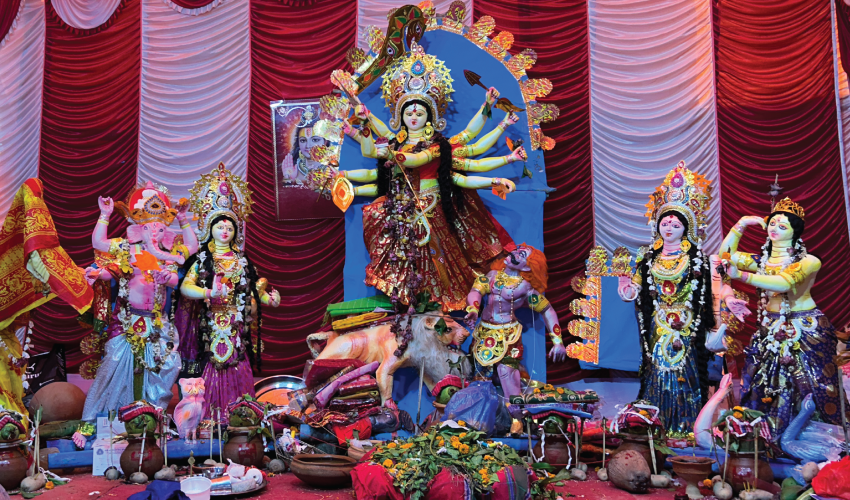By Ayman Anika
Old Dhaka – or Puran Dhaka – becomes livelier and grander during the Durga Puja celebrations. As if by divine summons, Goddess Durga descends to bless this historic enclave with a renewed spirit of camaraderie and festive exuberance. During this auspicious time, the narrow, serpentine alleys of Old Dhaka bristle with the energy of devotees and festivity-goers, each corner echoing with the rhythmic beats of dhak and dhols.
At the heart of these celebrations lies Shakhari Bazar. As you enter the bazar, the air fills with the fragrance of incense and the streets, draped in festive lights, guide you through a carnival of colors. The locality, known for its narrow lanes and historic architecture, bursts into life, with every storefront and residence decked in marigolds and alpanas.
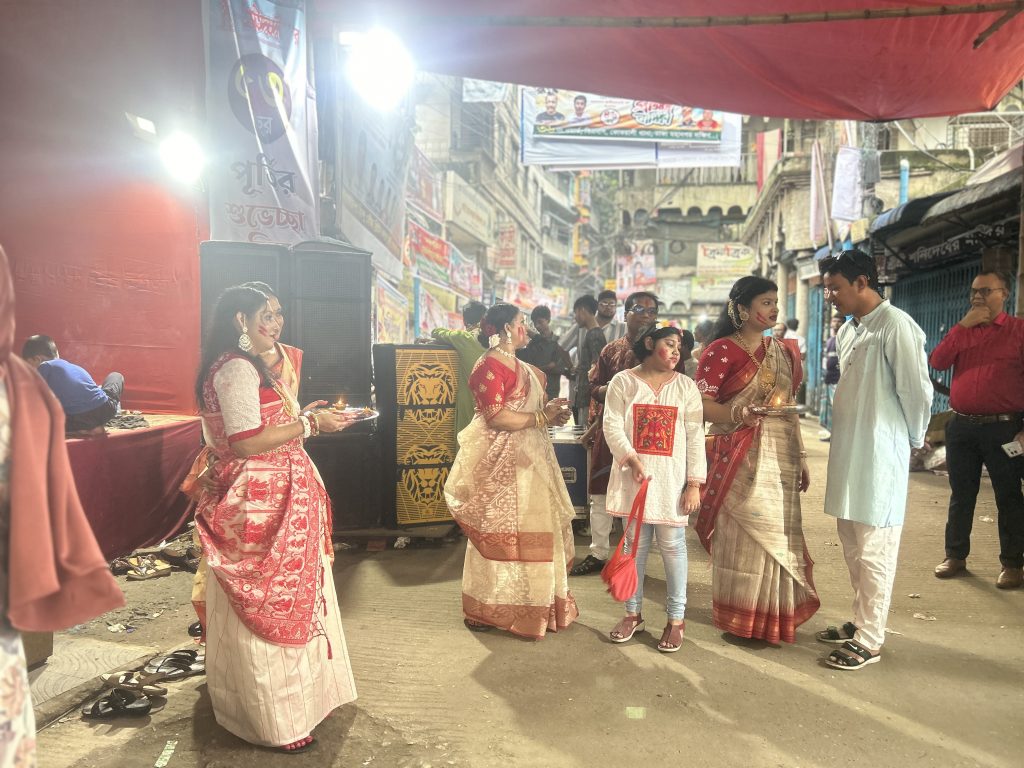
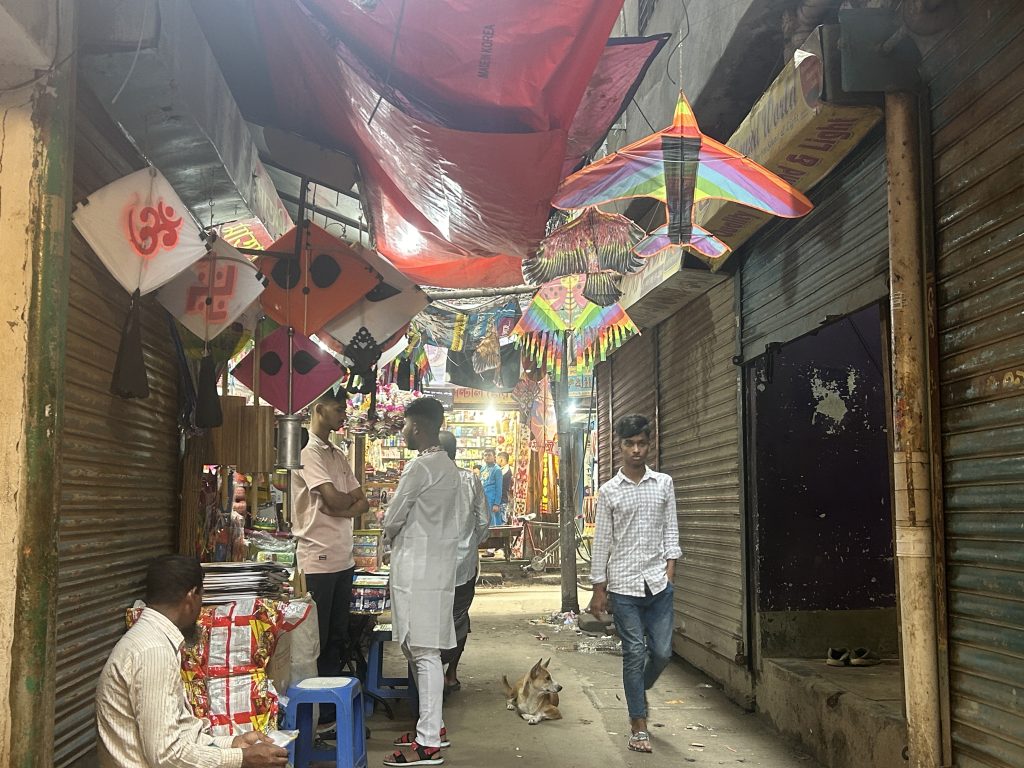
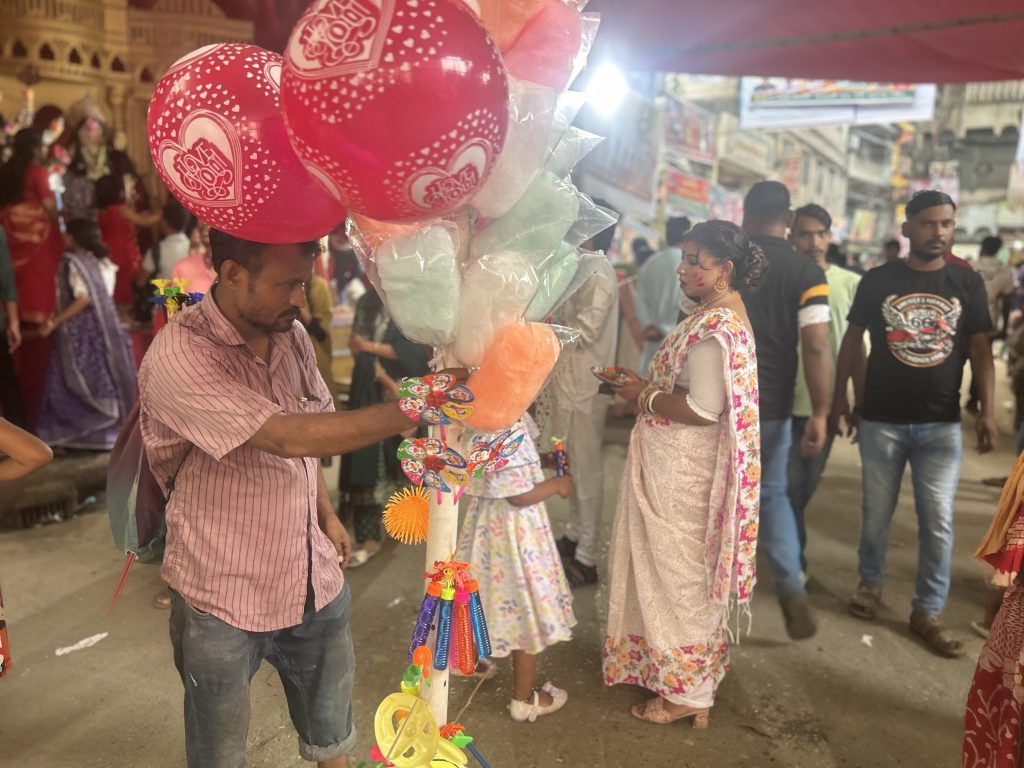
The mandaps, or makeshift temples, are marvels of creativity and devotion, each one elaborately decorated to welcome the goddess. Intricately designed idols of Durga, her children – Lakshmi, Saraswati, Ganesha, and Kartik – and the demon Mahishasura depict the scene of the cosmic battle, the centerpiece of the festival.
Artisans work for months, sculpting these divine figures from river clay, imbuing them with a lifelike essence that captivates all who gaze upon them.
Culinary delights are an integral part of the Durga Puja festivities in Old Dhaka. Stalls laden with traditional Bengali sweets like roshogolla, sandesh, and kalo jam cater to the sweet-toothed, while savory treats like fuchka, chotpoti, and biriyani offer a taste of local flavors that are as rich and varied as the culture of the city itself. Amidst these delights, the local artisans also display their handicrafts, from handmade jewelry to embroidered fabrics, drawing shoppers and admirers alike.
One of the most poignant moments of the festival is the Sandhi Puja, held at the juncture of the eighth and ninth days of celebrations. This ritual marks the moment when Durga is believed to have attained her ultimate power, Chandi, to kill Mahishasura. The atmosphere becomes charged with devotion as 108 lamps are lit, and devotees offer 108 lotus flowers to the goddess, seeking her blessings for prosperity and protection.
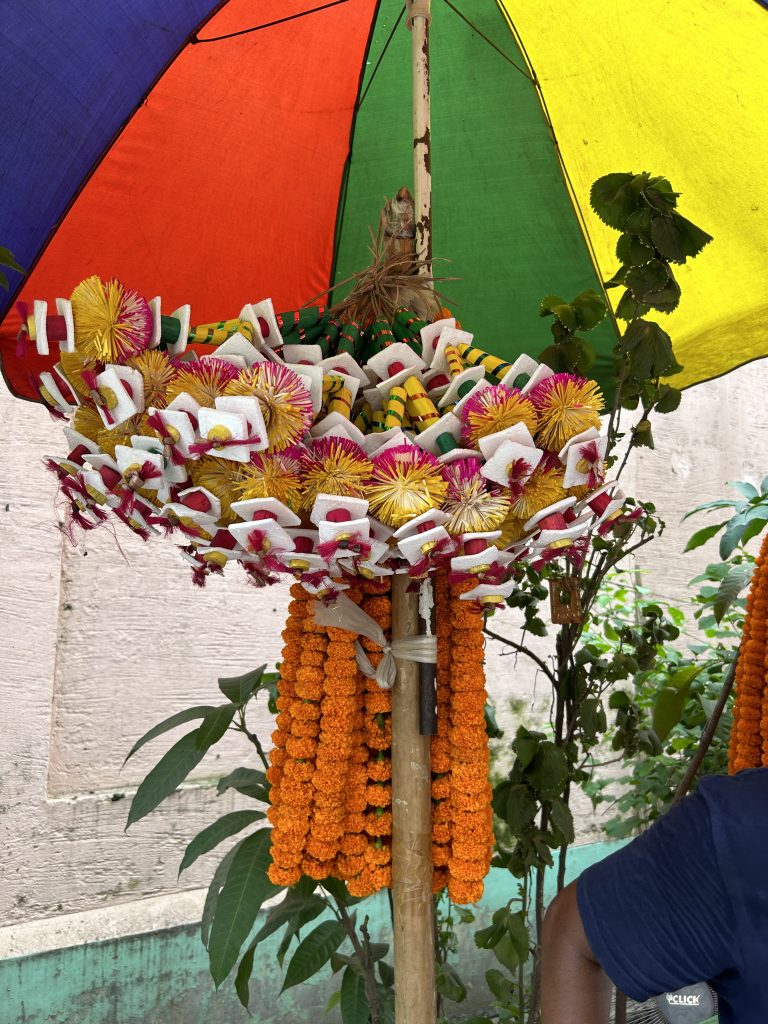
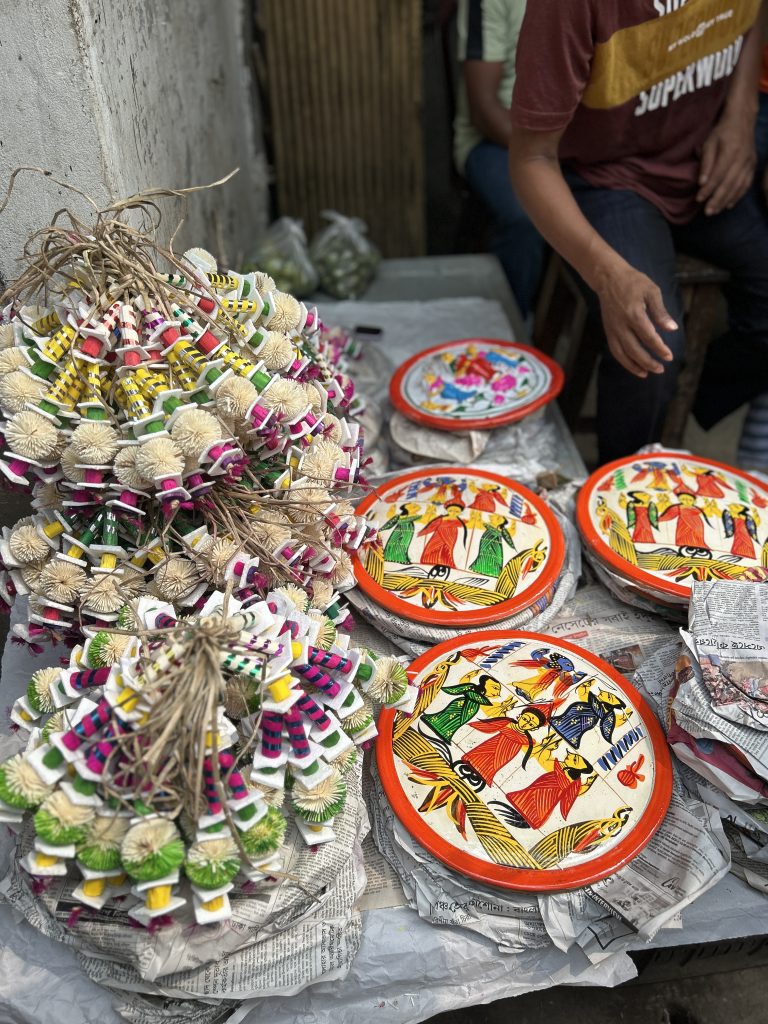
The culmination of Durga Puja is the Visarjan (immersion of the idols), where the idols of Durga and her children are paraded through the streets amidst chants and songs, to be immersed in the nearby river.
This ritual, symbolizing the departure of the goddess to her celestial abode, brings a palpable emotion to the air – both joyous and melancholic. As the idols descend into the water, devotees bid farewell with the hope of a return next year, chanting, “Ashche bochor abar hobe!” (It will happen again next year!).
Throughout the festival, Old Dhaka remains a beacon of communal harmony, with people of all ages and religions coming together to celebrate. It’s a place where the past and present merge, where the heartbeat of Dhaka is felt most fervently, and where the blessings of Goddess Durga are cherished in their most vivid and lively form.
As the festivities wind down and the lights dim, the spirit of Durga Puja lingers in the hearts of the people, a reminder of the eternal cycle of life, death, and rebirth, and the unyielding power of faith and tradition in the face of the ever-changing tides of time.
Anika Chowdhury
- Anika Chowdhury#molongui-disabled-link
- Anika Chowdhury#molongui-disabled-link
- Anika Chowdhury#molongui-disabled-link
- Anika Chowdhury#molongui-disabled-link




